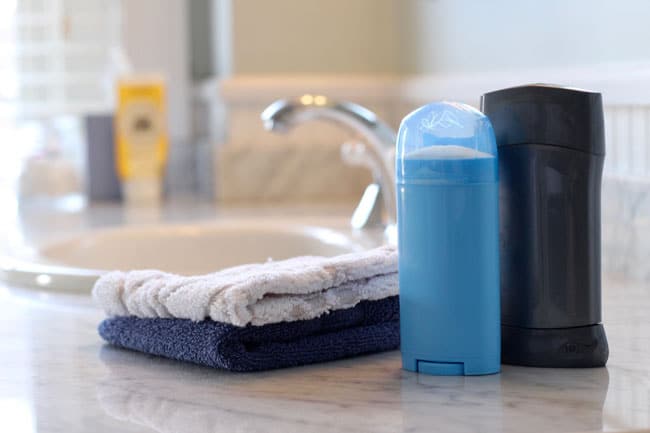 Most people put their deodorant on every day without thinking twice about it. It helps you feel clean all day long, smells fresh & innocently sits on top of your skin, right? The problem is that typical deodorants & antiperspirants are loaded with toxic ingredients that are linked with all sorts of health concerns like endocrine disruption, cancer & neurotoxicity. That’s why we’re here to help with the top 5 toxic ingredients to avoid to make the switch to a toxic chemical free deodorant.
Most people put their deodorant on every day without thinking twice about it. It helps you feel clean all day long, smells fresh & innocently sits on top of your skin, right? The problem is that typical deodorants & antiperspirants are loaded with toxic ingredients that are linked with all sorts of health concerns like endocrine disruption, cancer & neurotoxicity. That’s why we’re here to help with the top 5 toxic ingredients to avoid to make the switch to a toxic chemical free deodorant.
Choosing A Chemical Free Deodorant: The Top 5 Ingredients to Avoid
1. Triclosan – You might have heard that the FDA banned triclosan from antibacterial soaps in 2016, but its use is still permitted in loads of products like deodorants, acne products & toothpastes. It’s a synthetic pesticide linked with hormone disruption, increased risk of breast cancer, liver damage, cancer & the development of super-germs. To avoid it, skip any deodorant listing triclosan or triclocarban on the label.
2. Aluminum – Aluminum is used in antiperspirants to block the flow of sweat to the surface of the skin. The concern with aluminum is that it may be absorbed by the skin near the breast and cause estrogen-like effects. Because estrogen can promote the growth of breast cancer cells, some researchers are concerned that aluminum based antiperspirants may contribute to the development of breast cancer. While there have no studies definitely showing that aluminum based antiperspirants cause breast cancer, many researchers believe that the question is still open and that more research is needed.
3. Fragrances – We get it, fragranced deodorants can make you feel extra clean and protected from odor. But that comes at a high toxic cost. First some things you should know:
- Fragrance chemicals can pass through the skin and enter the blood stream. They are classified as carcinogens, hormone disruptors, neurotoxins, skin and respiratory irritants.
- The fragrance industry is self-regulated. Safety testing does not have to precede product sales, and fragrance cocktails don’t require reviews by regulatory agencies.
- Fragrances are considered trade secrets, so that manufacturers aren’t required to disclose the potentially hundreds of toxic ingredients hiding behind the one word “fragrance”.
A big step you can make towards finding a chemical free deodorant is avoiding any with “fragrance” listed on the label. Also watch out for deodorants labeled as having “natural fragrance,” because there is no standard criteria for what these words mean.
4. Pthalates – These are often used as fragrance ingredients and are not currently restricted for us despite their association with a host of health concerns including reproductive issues and developmental problemsin unborn children, as well as asthma and respiratory problems. You won’t see these listed on labels, since they fall under the mystery label of “fragrance”, but you can avoid them if you choose fragrance free deodorants.
5. Parabens – Parabens are preservatives commonly used in deodorants and lots of other personal care & cosmetics products. The CDC has detected parabens in almost all Americans tested. Like aluminum, these are also “estrogenic” chemicals, meaning they interact with your body’s hormones in a way that’s similar to estrogen. The concern is that other conditions that increase the body’s exposure to estrogen (like not having children or late menopause) have been linked to an increased risk of breast cancer. While there have been no studies proving that parabens cause breast cancer, many researchers believe that there is more research needed. Parabens have also been linked to endocrine disruption, reproductive toxicity, neurotoxicity and skin irritation. To avoid parabens, avoid deodorants with ingredients ending in -paraben.
Learn More
Deodorant is one of the more difficult products to find non toxic alternatives for. That’s because the vast majority of deodorants & antiperspirants have at least some of the ingredients noted above. A great resource for finding the most toxic chemical free deodorants is EWG, which helps you research safety information on specific ingredients as well as research specific products.



